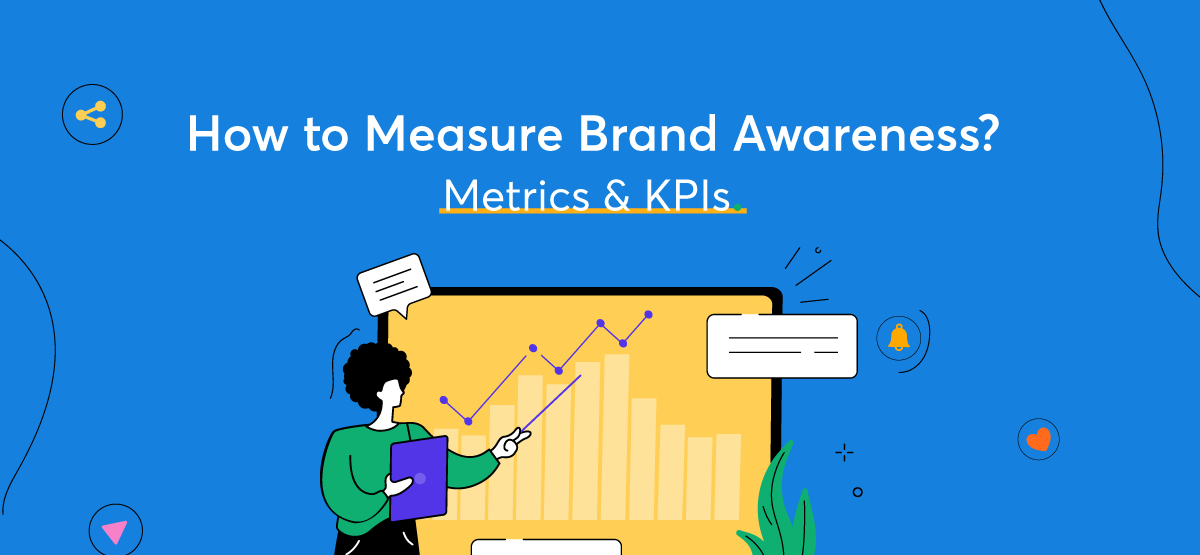In this digital age, brand visibility extends beyond traditional advertising. With consumers bombarded by information, measuring how well your brand stands out is crucial. This article explores how to measure brand visibility and provides insights into the metrics that truly reflect your brand’s reach.
How to Measure Brand Visibility?

Brand visibility is the cornerstone of a successful marketing strategy. It determines how easily consumers can recognize and recall your brand. The higher the visibility, the greater the chances of attracting and retaining customers.
Defining Key Metrics
1. Impressions
Impressions measure the number of times your content is displayed. It’s a vital metric for gauging initial brand exposure.
2. Reach
Reach quantifies the unique users who have seen your content. It gives a more refined perspective on your potential audience.
3. Share of Voice
Share of Voice (SOV) indicates your brand’s presence compared to competitors within your industry. It’s a valuable metric for assessing your market influence.
Social Media Metrics
1. Likes, Shares, and Comments
Engagement on social media platforms is a direct reflection of brand visibility. Analyzing likes, shares, and comments provides insights into audience interaction.
2. Follower Growth
A growing follower base signifies increasing brand visibility. Monitoring this metric helps evaluate the effectiveness of your social media strategy.
3. Hashtag Performance
Tracking the performance of branded hashtags can unveil the extent of your brand’s reach and influence on social media.
Website Analytics
1. Organic Search Traffic
A significant portion of brand visibility occurs through online searches. Monitoring organic search traffic provides insights into your website’s visibility.
2. Referral Traffic
Understanding where your website traffic originates helps refine your marketing efforts. Referral traffic metrics highlight platforms contributing to your brand’s visibility.
3. Bounce Rate
A high bounce rate may indicate a mismatch between user expectations and your content. Lowering the bounce rate enhances overall brand visibility.
Brand Mentions and Sentiment Analysis
1. Monitoring Brand Mentions
Brand mentions across various online platforms are crucial indicators of visibility. Positive mentions contribute to a favorable brand image.
2. Sentiment Analysis Tools
Leveraging sentiment analysis tools helps understand how your brand is perceived. Positive sentiment reinforces brand visibility and loyalty.
Competitive Analysis
1. Benchmarking Against Competitors
Comparing your brand’s visibility to competitors provides a benchmark for improvement. Analyzing their strategies unveils opportunities for enhancement.
2. Comparative Share of Voice
Understanding your share of voice relative to competitors showcases your brand’s position within the industry. It’s a key metric for strategic decision-making.
Offline Visibility
1. Traditional Media Coverage
While digital visibility is vital, traditional media coverage shouldn’t be overlooked. Combined efforts enhance overall brand visibility.
2. Event Presence
Participating in events and sponsorships contributes to offline visibility. Integrating offline efforts with online strategies ensures a holistic approach.
Emerging Trends in How to Measure Brand Visibility
1. Video Content Engagement
As video content gains traction, monitoring viewer engagement becomes crucial. High engagement levels enhance brand visibility.
2. Influencer Partnerships
Collaborating with influencers extends brand visibility to their followers. Choosing influencers aligned with your brand values maximizes impact.
3. Voice Search Impact
As voice search becomes prevalent, optimizing for voice queries enhances brand visibility in this evolving landscape.
Brand Visibility Tracking Tools
1. Google Analytics
A robust analytics tool, Google Analytics provides a comprehensive overview of website performance and user behavior.
2. Social Media Analytics Tools
Platforms like Facebook Insights and Twitter Analytics offer detailed metrics for evaluating social media visibility.
3. Brand Monitoring Tools
Dedicated brand monitoring tools, such as Brandwatch and AIM Insights, provide real-time insights into brand mentions across online platforms.
Strategies for Improving Brand Visibility
1. Content Optimization
Regularly updating and optimizing website content improves search engine rankings, enhancing brand visibility.
2. Social Media Engagement
Actively engaging with your audience on social media fosters a sense of community, increasing brand visibility.
3. SEO Best Practices
Adopting SEO best practices ensures that your brand appears prominently in relevant online searches.
Challenges
1. Attribution Difficulties
Attributing specific metrics to overall brand visibility can be challenging. Adopting a multi-faceted approach helps overcome this hurdle.
2. Integrating Offline and Online Data
Aligning offline and online visibility data poses challenges. Implementing cohesive strategies is essential for a unified approach.
Case Studies
1. Nike’s Digital Dominance
Nike’s strategic use of social media and innovative campaigns has propelled its digital visibility, setting a benchmark for other brands.
2. Coca-Cola’s Share of Voice
Coca-Cola’s consistent presence across various media channels has contributed to its significant share of voice globally.
Future Trends
1. AI and Predictive Analytics
The integration of AI and predictive analytics will revolutionize brand visibility measurement, providing more accurate and actionable insights.
2. Augmented Reality Impact
As augmented reality gains prominence, brands incorporating AR into their strategies will experience heightened visibility.
Conclusion
In conclusion, brand visibility is a multifaceted aspect requiring a strategic and holistic approach. By understanding and leveraging the right metrics, brands can enhance their visibility across various channels, ultimately fostering customer loyalty and business success.
Ready to elevate your brand visibility? Request a demo from AIM Technologies today!
FAQs
How often should I track my brand visibility metrics?
- Regular monitoring is essential. Aim for weekly or monthly assessments to identify trends and make timely adjustments.
Is social media the only platform affecting brand visibility?
- While social media is crucial, brand visibility is impacted by various factors, including website performance, SEO, and traditional media.
How can small businesses improve brand visibility on a limited budget?
- Focus on organic strategies, engage with your audience on social media, and collaborate with local influencers to maximize impact.
What role does user-generated content play in brand visibility?
- User-generated content enhances authenticity and can significantly boost brand visibility through social sharing.
Are there industry-specific metrics for measuring brand visibility?
- Yes, some industries may prioritize certain metrics based on their target audience and market dynamics.



